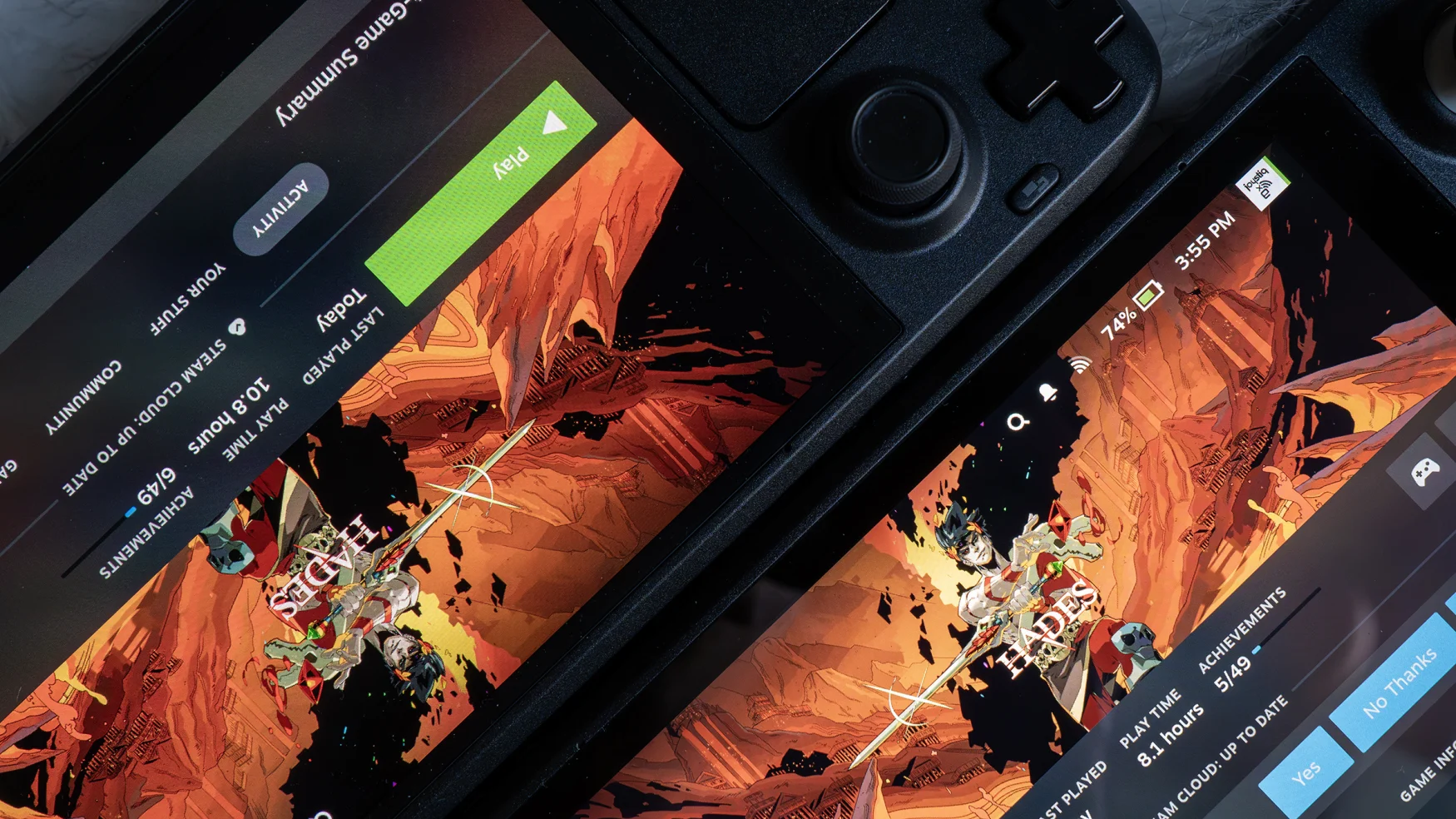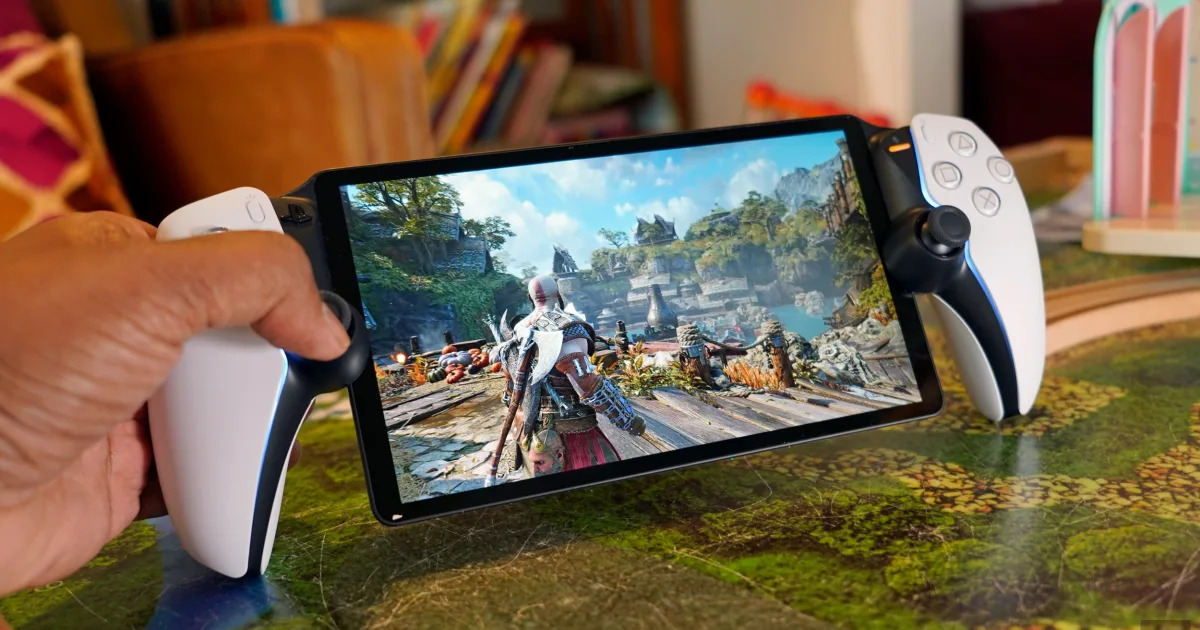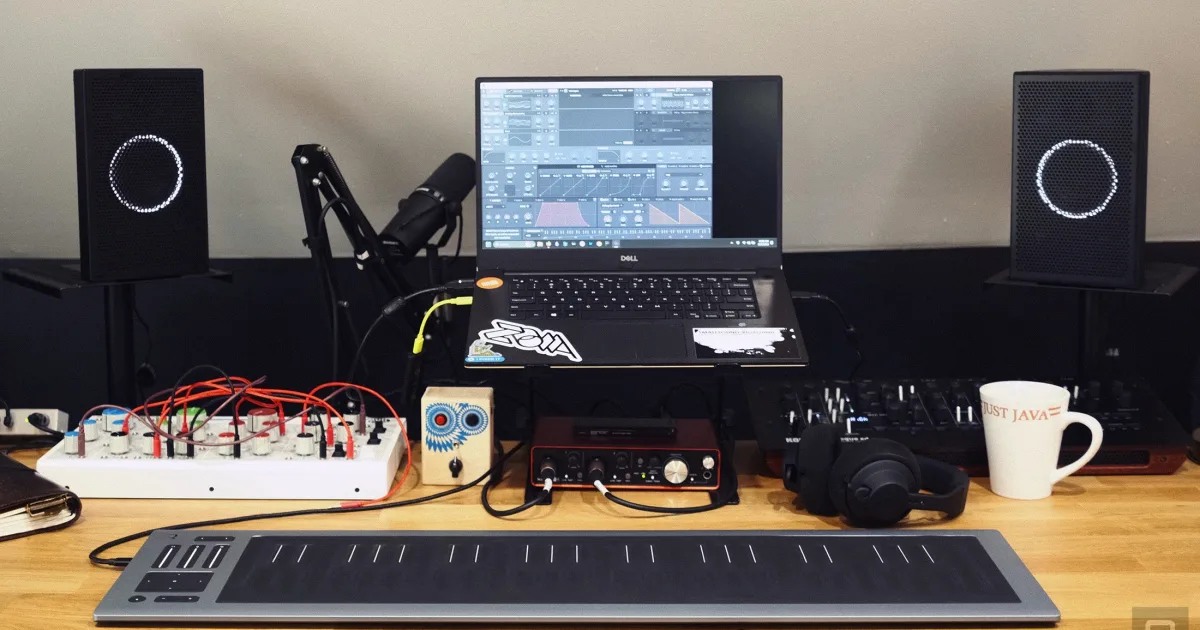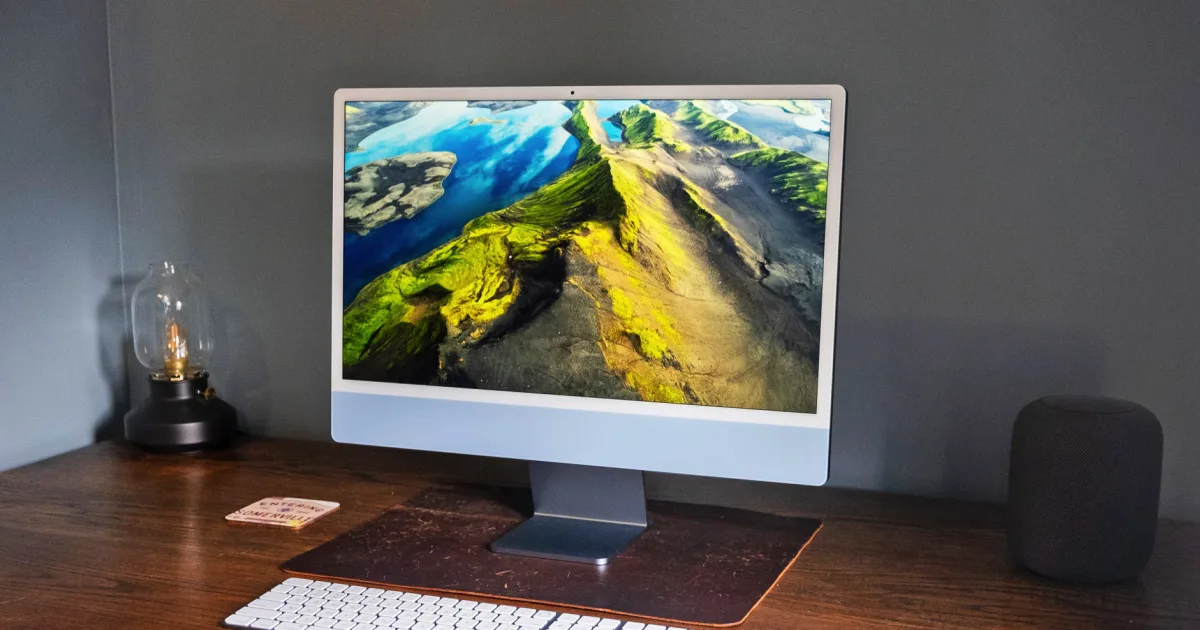The Steam Deck LCD: More Than Just a Handheld PC
ENBLE has published a review of the Steam Deck LCD, highlighting its continued status as one of the top handheld PCs in 2023.
I legitimately feel bad for anyone who bought a Steam Deck right before Valve’s surprise reveal of the new and improved OLED model. The announcement came out of nowhere and the Steam Deck OLED is a better version of the LCD original, at roughly the same price point. So, I understand why the r/SteamDeck forum was immediately flooded with new owners lamenting their life choices. To these people, and to anyone with the debut hardware, I want to make it perfectly clear: The Steam Deck LCD is one of the best handheld PCs on the market.
Valve still thinks it’s pretty good, too. The company is continuing to sell the 256GB LCD version of the Steam Deck at a reduced price of $399, with two OLED models above it. This is the review for people eyeing Valve’s entry-level handheld, and for any original Steam Deck owners who could use a little reassurance these days. (It’s OK, buddy.)
Valve Steam Deck
 Steam Deck LCD $399 at Steam
Steam Deck LCD $399 at Steam
My review of the Steam Deck in February 2022 started with a delirious metaphor: “The Steam Deck is what happens when the Vita and the Wii U get drunk on Linux and make a big baby together.” Nearly two years later, I stand by this sentiment completely. The Steam Deck is portable and it supports multiple input methods, much like the Vita, but it’s so bulky that it never leaves my house, just like ye olde Wii U. It also natively runs Steam, which is a massive boon for players who value ease-of-use.
The 256GB Steam Deck is powerful enough to run most Steam games, even AAA titles like Elden Ring, Armored Core VI, and Cyberpunk 2077. It has a custom 7nm AMD APU, 16GB of fast RAM, a 40Whr battery, and a 7-inch, 800p LCD with a max refresh rate of 60Hz. The handheld offers a peak brightness of 400 nits, which is about the same as the Switch OLED.
Pros:
- Costs just $399
- Steam comes pre-installed
- Multiple input methods
- Game library is strong
Cons:
- It’s really big
- Gets warm quickly
- Bluetooth issues
- Isn’t as good as the OLED
The Steam Deck LCD performs like a champ. Visually striking games like The Cosmic Wheel Sisterhood, Dave the Diver, and Rollerdrome look and play beautifully on the display. It has its limitations: blacks aren’t quite as black as they could be, and dark backgrounds stand out from the bezels with a gray tinge. The Steam Deck LCD’s constrained color gamut is perceptible, but it isn’t tragic and it’s not even a consideration in the heat of a good game.
Alongside standard dual-analog inputs, the 256GB Steam Deck has a touchscreen, two haptic pads on either side of the display, and four back-panel buttons that have a nice, bassy click. I tend to play indie games, generally ranging in size from 200MB to 80GB, and I currently have 22 titles installed on my Deck, with 9GB of room to breathe. Storage space hasn’t been a major issue.
Heat, on the other hand, has been an issue. The Steam Deck LCD generates enough heat to make my palms clammy after about 30 minutes, and it feels like a lot of warmth collects in the grips. The whole thing gets slightly toasty while running games, but it’s never become unbearably hot or overheated on me. The fan persistently blows warm air from the top of the machine, but not in an obnoxious way.
Battery life on the Steam Deck LCD isn’t stellar, but this also isn’t a huge issue for a device that stays in my home. Valve says the Steam Deck LCD can last up to eight hours on a single charge, but in practice, the longest run I’ve achieved is four and a half hours. Lowering brightness and refresh rate can, of course, help, but honestly, I’ve never had a battery emergency with the Steam Deck LCD — it’s always at home, close to a charging cable, safe and warm (probably thanks to the thermals).
 The Steam Deck LCD (on the right) can’t match the vibrancy or brightness of the OLED model. ENBLE
The Steam Deck LCD (on the right) can’t match the vibrancy or brightness of the OLED model. ENBLE
I’ve used various adjectives to describe the Steam Deck, including monstrous, massive, hefty, beefy, and beastly. All of these words remain accurate, and I may even introduce some new ones today. The Steam Deck LCD is 11.7 inches long, 4.6 inches tall, 1.9 inches thick, and it weighs 1.5 pounds. For comparison, the Switch Lite and Vita each weigh about half a pound, and the Wii U gamepad weighs slightly more than 1 pound. My hands are smaller than average (but I’m not, like, toddler-sized), and the Steam Deck looks and feels freakish when I hold it. My palms get crampy after just 10 minutes of play, and even mid-game I find myself regularly searching for more comfortable ways to hold it. This is also true for the OLED model, which uses the same chassis and is essentially the same weight.
To counteract the Steam Deck’s heft, I’ve developed a strange habit. I have an assortment of stuffed animals (I like claw machines, sue me), and a few of them are perfect props for the Steam Deck, allowing me to rest the device on my lap without straining my neck. The stuffed roast chicken is particularly useful in this regard, and it’s rarely far from the Steam Deck.
There’s another, non-stuffed solution for Steam Deck neck and sweaty, crampy palms — the Docking Station. Put simply, it’s brilliant, and I love it. With the Docking Station and recent software updates, Valve is leaning into the at-home nature of the Steam Deck, allowing players to connect the device to external displays, like gaming monitors and TVs. On external screens, the Steam Deck LCD supports HDR and VRR, even though the device’s display can’t sustain these features. I’ve mainly used the Docking Station in the living room, turning my Deck into a revamped Steam Machine, and every game I’ve booted up looks lovely on the larger screen. In docked mode, there’s no difference between the OLED and LCD Steam Decks — they have the same performance targets, and they can both handle external HDR and VRR.
Bluetooth is hit-or-miss on the Steam Deck LCD. In my recent testing, I was able to easily pair an 8bitdo Ultimate Controller and my old Galaxy Buds Plus with the handheld, but I still haven’t been able to get my new Galaxy Buds2 Pro to connect. This has been an issue with the Steam Deck LCD since day one, so while it’s not surprising any longer, it’s still frustrating at times.
The biggest difference between the Steam Deck at launch and today is Steam itself. There are four labels for games signifying how well they’ll perform on the handheld: Verified, Playable, Unsupported, and Unknown. When the device first landed, only about 10 percent of my Steam library was Verified to run on Deck, and it was hard to tell what that meant, anyway. Nowadays, 30 percent of my library is Verified, and 74 percent of it is Verified or Playable. Verified titles work seamlessly on the Steam Deck, and Playable games aren’t far off — they often have small optimization requirements that don’t interrupt the actual gameplay, like needing to use the on-screen keyboard. According to a quick Steam search, there are currently 11,229 Verified or Playable Steam Deck games. That’s a larger library than any console that’s been released to date.
 Some of the recent Deck Verified titles on Steam. Valve
Some of the recent Deck Verified titles on Steam. Valve
Today, most mainstream games are Verified or Playable on Steam Deck at launch (RIP Starfield and Star Wars Jedi: Survivor). Generally, if a new game supports gamepad input, it tends to translate well to the handheld. Having a robust, built-in game store is huge for people who just want to pick up a portable PC and start playing, and it’s an edge that the Steam Deck specifically has over the rest of the handheld market.
The handheld PC segment has exploded over the past two years, and there’s now a constant stream of new devices rolling out from the likes of Ayaneo, Lenovo, Ayn, and ASUS. The Steam Deck has traditionally been cheaper than the others, with the $399 model offering unbeatable value. In the Steam Deck’s initial rollout, Valve offered just 64GB of storage at that price point, making the current deal even sweeter. While competitors are closer than ever on price — and at the high-end, ahead on performance — a handheld like the Steam Deck LCD still typically costs around $600.
Its clearest contender is, of course, the Steam Deck OLED. I’m not trying to undo all the work I’ve done here, but if you have the extra cash, go ahead and grab the OLED version. The Steam Deck OLED comes in two flavors: 512GB for $549 and 1TB for $649. These are fantastic price points, especially considering the new model features a 7.4-inch OLED display with native HDR, faster frame rates, pure blacks, and a peak brightness of 1,000 nits. The new model has improved Bluetooth and Wi-Fi, better thermals and weight distribution, a longer battery life, and cute orange accents. The OLED version is the same size as the LCD edition and doesn’t offer upgrades in terms of actual processing power, but it is simply better inside and out. Just remember: This does not mean the LCD model is trash.
Compared with the wider handheld sector, the Steam Deck LCD offers a fantastic return on investment. It’s easy to use out of the box, offers a variety of input methods, and it’s cheaper than anything comparable in its category. The main drawbacks are its size and battery life — but if it’s not too big for you, and if you plan to play at home most often, it’s an excellent bit of hardware.
Two years on, and I’m still using my Steam Deck LCD in the same way, as an in-home portable device. My Steam Deck travels from the living room, to the office, to the bedroom, and back again throughout the week, just like it did when I first got my tiny hands on it. The main differences are that, nowadays, its library is much larger, and I always have a suitably sized stuffed animal in tow.
Q&A
Q: Why should I consider buying the Steam Deck LCD? A: The Steam Deck LCD offers an incredible gaming experience with its powerful hardware, versatile input methods, and extensive game library. Plus, it comes at an affordable price of $399.
Q: Is the size of the Steam Deck LCD a major drawback? A: The size of the Steam Deck LCD can be a bit unwieldy, especially for those with smaller hands. However, there are workarounds like using props or the Docking Station to provide more comfort during extended gaming sessions.
Q: What are the main differences between the Steam Deck LCD and the Steam Deck OLED? A: The Steam Deck OLED features a higher-quality display with better color reproduction and brightness, improved Bluetooth and Wi-Fi, longer battery life, and other minor enhancements. However, the Steam Deck LCD still holds its own and offers great value for its price.
Q: Can I play AAA games on the Steam Deck LCD? A: Yes, the Steam Deck LCD is powerful enough to run most AAA games available on Steam, providing an impressive gaming experience on the go.
Q: How does the Steam Deck LCD’s game compatibility compare to other handheld devices? A: The Steam Deck LCD boasts a large game library, with a growing number of titles that have been Verified or Playable on the device. This gives it an edge over other handheld devices in terms of game availability and compatibility.
Future Developments and Impact on the Market
The Steam Deck LCD has made a significant impact on the handheld PC market since its release. With its affordable price and powerful hardware, it has become a popular choice among gamers looking for a portable gaming solution. Its success has also contributed to the growth of the handheld PC segment, with more manufacturers entering the market and offering their own handheld devices.
As the market continues to evolve, it is expected that the competition will intensify, with manufacturers striving to offer better performance, features, and affordability. The Steam Deck OLED, with its superior display and enhanced features, is a testament to this trend. It serves as an indication that handheld devices are becoming more capable and feature-rich.
In the future, we can expect to see further advancements in handheld PC technology, such as increased performance, better battery life, and improved display quality. These developments will provide gamers with even more options for on-the-go gaming and may lead to new innovations in gaming experiences.
Overall, the Steam Deck LCD has set the bar high for handheld PCs, offering a fantastic gaming experience at an affordable price. Its impact on the market is evident, and its success has paved the way for future developments in the handheld PC segment.
References
- Steam Deck OLED review: Better screen, new buttons, same performance
- Chameleon Android Malware Can Turn Off Fingerprint Unlock, Steal PIN
- The latest deals on Apple Watch Series 9, ultra 2, and more: What you need to know
- Recent software updates
- Steam Deck verified games
Subscribe to our newsletter for great deals on consumer electronics, curated by ENBLE’s editorial team. See latest
Please enter a valid email address
Please select a newsletter
By subscribing, you are agreeing to ENBLE’s Terms and Privacy Policy.
I hope you enjoyed this article on the Steam Deck LCD! If you found it helpful, feel free to share it with your friends on social media. And don’t forget to leave a comment below with your thoughts on the Steam Deck or any other handheld PCs you’ve tried! Happy gaming! 🎮🚀






